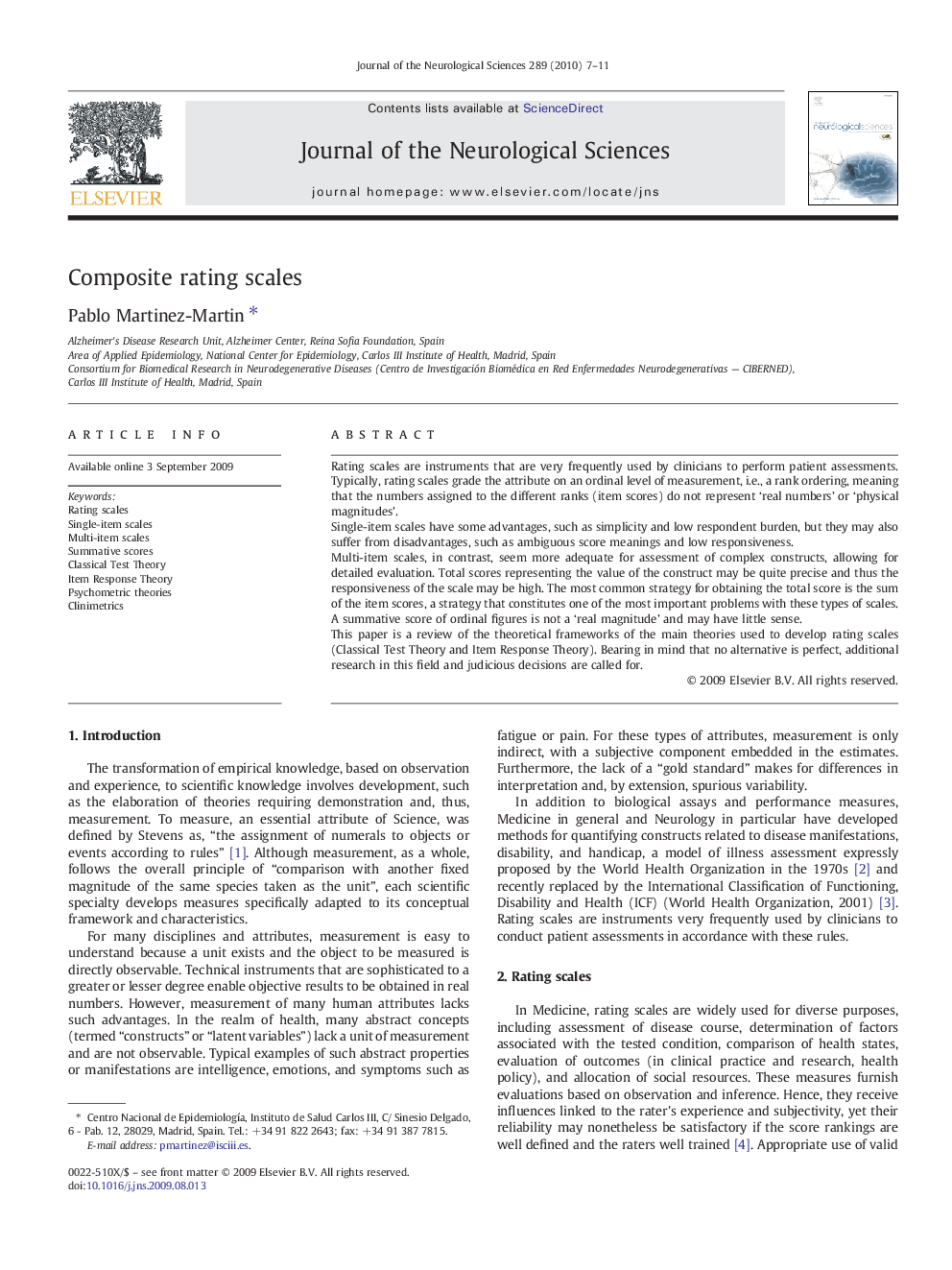| کد مقاله | کد نشریه | سال انتشار | مقاله انگلیسی | نسخه تمام متن |
|---|---|---|---|---|
| 1914859 | 1535173 | 2010 | 5 صفحه PDF | دانلود رایگان |

Rating scales are instruments that are very frequently used by clinicians to perform patient assessments. Typically, rating scales grade the attribute on an ordinal level of measurement, i.e., a rank ordering, meaning that the numbers assigned to the different ranks (item scores) do not represent ‘real numbers’ or ‘physical magnitudes’.Single-item scales have some advantages, such as simplicity and low respondent burden, but they may also suffer from disadvantages, such as ambiguous score meanings and low responsiveness.Multi-item scales, in contrast, seem more adequate for assessment of complex constructs, allowing for detailed evaluation. Total scores representing the value of the construct may be quite precise and thus the responsiveness of the scale may be high. The most common strategy for obtaining the total score is the sum of the item scores, a strategy that constitutes one of the most important problems with these types of scales. A summative score of ordinal figures is not a ‘real magnitude’ and may have little sense.This paper is a review of the theoretical frameworks of the main theories used to develop rating scales (Classical Test Theory and Item Response Theory). Bearing in mind that no alternative is perfect, additional research in this field and judicious decisions are called for.
Journal: Journal of the Neurological Sciences - Volume 289, Issues 1–2, 15 February 2010, Pages 7–11